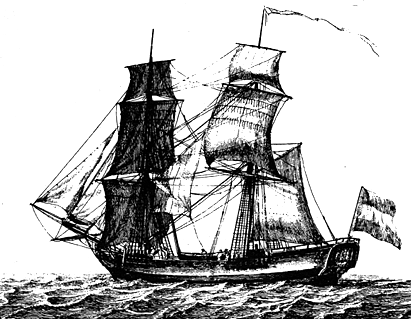Russia and Finland are planning to raise a wreck carrying paintings bought by Catherine the Great of Russia. The ship was still in good condition when it was rediscovered in 1991 and a few artefacts salvaged. The cargo beneath deck remains tantalisingly undisturbed.
 In October 1771 the Vrouw Maria, a Dutch merchant ship, was on her way from Amsterdam to St Petersburg. She was carrying goods for Dutch trade with Russia: sugar, dyestuff, zinc and other metals, cloths, coffee and foodstuffs. But there were also art objects and valuable 16th and 17th century Dutch paintings, bought at auction for the Russian Empress Catherine the Great. Unfortunately, it was a stormy night and the Vrouw Maria hit rocks off the south-western coast of Finland.
In October 1771 the Vrouw Maria, a Dutch merchant ship, was on her way from Amsterdam to St Petersburg. She was carrying goods for Dutch trade with Russia: sugar, dyestuff, zinc and other metals, cloths, coffee and foodstuffs. But there were also art objects and valuable 16th and 17th century Dutch paintings, bought at auction for the Russian Empress Catherine the Great. Unfortunately, it was a stormy night and the Vrouw Maria hit rocks off the south-western coast of Finland.
The rocks caused only minor damage, but shortly afterwards the ship ran aground and lost its rudder. Freed by a large wave, the crew found it leaking badly. Lowering anchor, the crew manned the pumps, but the ship continued to take on water. At dawn on 4 October, the decision was made to abandon ship. The crew reached nearby rocks, from which they hailed a passing boat. Help arrived, but after several days no progress had been made towards stabilizing the ship, whose pump was clogged with coffee beans from the cargo. On the morning of 9 October, the Vrouw Maria sank beneath the waves.
 The wreck is located in waters administered by the Finnish government and is protected by the Antiquities Act. It lies on an even keel at a depth of 41 meters, almost completely exposed and listing slightly to starboard. The hull is made of oak and is carvel-built (a method of boat building where planks are fastened edge to edge, gaining support from the frame and forming a smooth surface). The ship appears to be exceptionally well preserved with the lower sections of its two masts remaining in place.
The wreck is located in waters administered by the Finnish government and is protected by the Antiquities Act. It lies on an even keel at a depth of 41 meters, almost completely exposed and listing slightly to starboard. The hull is made of oak and is carvel-built (a method of boat building where planks are fastened edge to edge, gaining support from the frame and forming a smooth surface). The ship appears to be exceptionally well preserved with the lower sections of its two masts remaining in place.
Customs records of the period make no mention of the goods belonging to Catherine the Great, since the Empress enjoyed tax exemption. Knowledge of the paintings bought at auction comes from diplomatic correspondence between Russian and Swedish authorities. Further hints have also been found in the auction catalogues and Catherine’s personal correspondence.
The canvases Catherine bought are known to have included Large Herd of Oxen by the Dutch painter Paulus Potter (1625-54), who specialized in animals in landscapes; Woman at her Toilette by Gerard ter Borch (1617-81), whose works are comparatively rare; and other paintings by painters such as Gerard Dou (1613-75).
Apparently, Catherine sent several expeditions to salvage the ship’s cargo, which may indicate that the paintings – whose value today could be in the realm of 100 million Euros – were packed in waterproof lead cylinders sealed with wax and could still be saved.
Nowhere else in the world are there as many well preserved wooden wrecks as in the Baltic Sea, whose waters receive very little sunlight, have low levels of corrosive salt and a unique absence of ship-eating worms. Some 20,000 wrecks of ships and smaller boats are thought to lie beneath the surface, which makes the Baltic a relatively unexplored undersea museum.
In 1764 Catherine, who presided over a golden age of Russian culture, began the art collection that became the Hermitage Museum in St Petersburg. The loss of the paintings on the Vrouw Maria did not prevent her in 1779 from buying more than 200 pictures previously owned by Britain’s first Prime Minister, Sir Robert Walpole, including works by Rembrandt, Rubens, Poussin, Velázquez and Veronese. Recently on display at Houghton Hall, Norfolk, England, they now form the core of the collection belonging to Russia’s State Hermitage Museum.